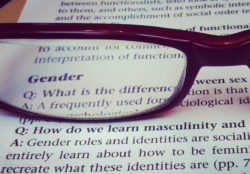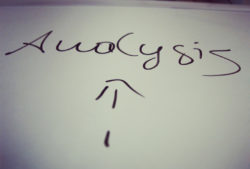Using Archives in Teaching and Assessment Activities - Some Suggestions
There are many ways in which you can use archives and archival collections to enhance teaching, assessment and supervision and to promote opportunities for research-led learning at both undergraduate and postgraduate level. In this page, we offer some suggestions for how to do so.
You may also want to take a look at some of the resources listed on the "Other Useful Resources" and "Project Materials" pages.
Print relevant images
 Print relevant images from our image database, and use them in seminars for activities and discussion.
Print relevant images from our image database, and use them in seminars for activities and discussion.
For example, you can ask students to:
- compare images from different periods (as in here and here),
- to examine the language used in a particular document (as in here, here and here),
- to discuss how particular practices, stereotypes and norms have changed (as in here), and consider how particular feminist demands, ideas and campaigns contributed to produce those changes.
Download relevant images
Download relevant images from our image database, and add them to your lecture slides.
As one student told us, "I know this seems like a pretty basic and silly thing to suggest, but you wouldn't believe how boring and plain PowerPoint lecture slides are!".
Take a trip to the Feminist Archive North
Take students on a study trip to the Feminist Archive North, the Marks & Spencer Company Archive, or to another local archive.
- Every year, the Feminist Archive North organises a thematic exhibition with guided tours on International Women's Day (March 8th). The 2013 exhibition, for example, focused on women in science and technology. To organise a study trip, contact the Archive by email.
A group of students taking the module SLSP2050: The Sociology of Gender visited the exhibition in 2013. Here's what they said about the experience:
Visiting the FAN Exhibition on International Women’s day brought everything we had been studying in ‘The Sociology of Gender’ to life. Not only did we get to see artefacts that related directly to our course, but we also got to hear personal accounts about the issues explored within the exhibition from those giving us the tour. Seeing the array of resources that FAN has to offer has inspired me to use archives in my future research.
Visiting FAN as part of the module was incredibly helpful and enriching. It was wonderful to see real artefacts and to meet and talk to the FAN archivists. As undergraduates, we rarely get this opportunity, which is a shame as it helps you apply the concepts and theories you learn about in lectures and books to real life, meaning you get a deeper understanding.
- The Marks & Spencer Company Archive has a permanent exhibition on the history of Marks & Spencer, which can be used to examine a range of themes including the history of work and employment, and transformations in advertising, clothing, family life and food throughout the 20th century. To find out more about group visits to the Archive, click here.
Conduct research in archives
Encourage students to conduct research in archives as part of their assessment for a module, or work for a dissertation project.
 The collections held in these and other archives provide rich material for analysis. Students may find it interesting, for example, to examine how a particular topic is discussed throughout different periods in the feminist magazine Spare Rib
The collections held in these and other archives provide rich material for analysis. Students may find it interesting, for example, to examine how a particular topic is discussed throughout different periods in the feminist magazine Spare Rib - which is available at the Feminist Archive North - or in St Michael News, the staff newsletter for Marks & Spencer - which is available in the open reading section in the Marks & Spencer Company Archive (no reading room booking required).
Other valuable materials include M & S staff handbooks for different decades, or the interviews with activists in the women's liberation movement conducted as part of the Feminist Archive North's Oral History Project. For other valuable materials and resources held in other archives, see our further resources page, and items 10 - 12 in the list of exercises below.
If you would like to encourage your students (and colleagues) to use the Marks & Spencer Company Archive as part of their dissertation research (or dissertation supervision), you are very welcome to print or email copies of this information flyer.
Exercises to try
If you would like your students to explore archives in more depth, and/or to think in more detail about the role of archives/libraries and the nature and effects of processes of archivisation, try one or more of these exercises.

© Artwork ‘Biografias VI’, by Alicia Martín, made for the International Paper Biennial 2012 for Museum Meermanno | House of the Book. The artwork, attached to the façade of the museum, was on display Sept. - Dec. 2012. Photo by Frank Jansen, Den Haag.
All of the activity ideas listed below are based on exercises suggested by the authors who contributed to the book Teaching Gender with Libraries and Archives: The Power of Information, edited by Sara de Jong and Sanne Koevoets, which was published in 2013 on the Teaching with Gender bookseries, edited by Atgender.
The exercises have been adapted and reworked by Anna Colgan, in an attempt to make them suitable also for undergraduates and/or modules introducing students to gender and feminism for the first time.
- Give each student (or pair/group) an archive to look at, and ask them to find something that is relevant to each week's topics. There could be a section of the lesson dedicated to sharing the material found, or an online forum where students can write posts about what they found (with links). Students can also write a 500-word piece about what they found each week (relating to the set readings if possible).
- Consider a library/an archive, and look at how the library/archive defines women/gender/feminism. Does this definition exclude any groups or leave gaps in what is looked at/classified as falling under women/gender/feminism?
- Investigate who decides which materials are chosen to be included in the library/archive and how the materials are categorized and displayed within the library/archive. What impact does this have on the production and dissemination of knowledge and silences/exclusions?
- Look at the gender section within your library. Does it exist? Where is it placed? How easy is it to find information about it and access it? How big is it? Do you feel gender is included or excluded from mainstream libraries and academia?
- Look at and compare recommended reading lists for gender-related moules. Are there certain areas which come up more than others, or areas which are ignored? This could also be done for the whole library/archive, not just reading lists, to see what topics are missing from the gender section of the library. Students could also look at reading lists for other disciplines which relate to gender and see if they have gender-related books on their reading lists/section in the library. Students could also compare these lists to the national library.
- Search different databases using key terms. Try different words to see the impact this has on what is found and compare the results across different archives/libraries.
- Compare the rules/membership requirements/materials kept for different archives/libraries. Discuss the impact these differences may have on the use and content of the archives. Reflect on, and discuss, which rules you prefer.
- Ask students whether their family has a private archive. If so, what is included in it? Who are the people represented within it? Who is in charge of the archive? How do they decide what to keep in it? Students could do a project based on their family archive to present to the class.
- Students can visit an archive (online or physical) and research an important, but forgotten, person (this could be done within a local context, or in relation to a specific topic). They could present their findings to the class or write a report reflecting on their experience of using the archive, as well as what they found out about the person.
- Use the FRAGEN database to compare feminist movements in two countries. Choose a specific time period or aspect to look at. Explore how the movement developed, what triggered these developments, what was achieved and how it was achieved. Discuss the different feminisms that appear in each country and which had the most influence within that country. Students can also reflect on the methodological dilemmas they faced when choosing and comparing material from different countries and/or time periods.
- A more advanced exploration of FRAGEN could look into the canonisation of texts within the archive, exploring how they were chosen and by whom.
- Select material from the FRAGEN archive for students to discuss. They can debate which kind of feminisms they think are present within each document, and see if they match those categories by the people who uploaded them to the archive. Discuss and reflect on answers, e.g. the difficulties they faced in categorising; whether categorising is productive or forces ideas into set definitions which may not be a true reflection of a document; who chooses how to categorise texts and the impact this has; can something be categorised under a strand of feminism that did not exist as such when the piece was written. Students could also discuss if there are certain types of feminism which are incompatible and cannot be present within the same document.
- Consider an archive and discuss how its collection and activities contribute to "uncover" women who have been forgotten in history, or help build a community, or include a more diverse range of people and materials within the collection, to help overcome hierarchies that often emerge in libraries.
- Authors like Sanne Koevoets have suggested that the library is understood as a feminine and feminised space, and that popular stereotypes of the librarian are gendered and tend to fall in one of two extremes: the old, rigid and disciplining librarian, and the sexualised librarian. Students could be asked to draw or mind-map ideas of the stereotypical librarian, and discuss these: where have the ideas come from? What impact do they have on people's perception and use of libraries and archives? Students could then follow this discussion by going into a library or archive, and taking notes on what the librarians are actually like.
- Choose a library/an archive and identify the different media it has. What impact does this have on access and exclusion; empowerment; knowledge production and dissemination?
.
All photos on this page (except book cover) are by Maria do Mar Pereira.
